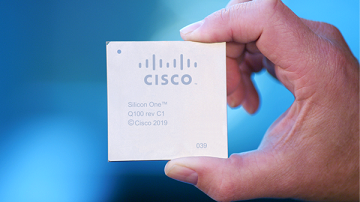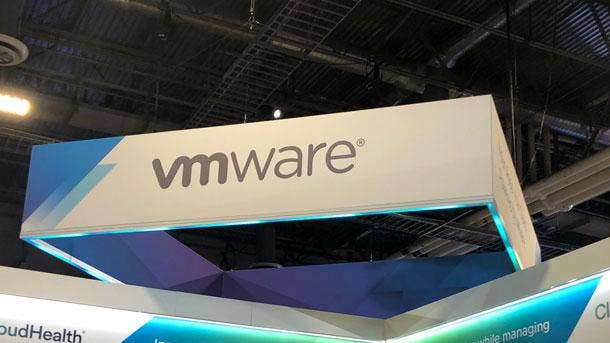WWT CEO Jim Kavanaugh’s 10 Boldest IT Bets And Myths For 2020
World Wide Technology CEO Jim Kavanaugh tells CRN what his biggest strategic and investment bets will be this year as well as some trends that are just hype.

Jim Kavanaugh Is ‘Bullish’ About 2020
IT visionary Jim Kavanaugh has some big plans in store for his $11.2 billion channel powerhouse World Wide Technology in 2020.
“I’m very bullish on where the market is,” said Kavanaugh, who co-founded WWT in 1990, in an interview with CRN. “I’m bullish about where we are investing to grow the business. I don’t see anything that overly concerns me at this point from a macro perspective.”
Kavanaugh plans to invest millions in net new hires to attack fast growing market segments while also doubling down on the innovation strategies from the likes of Cisco and VMware. St. Louis-based WWT, which ranks No. 8 on CRN’s 2019 Solution Provider 500 list, is one of the largest channel partners in the world, generating $11.2 billion in revenue in 2018.
Here are some of the biggest IT bets Kavanaugh will make in 2020 along with thoughts on several industry hype’s he doesn’t see coming to fruition this year.

Boosting Services Is Vital To Success In 2020
For 2020, [our strategy] is about aggressively moving towards a services-led organization that is highly focused on driving digital transformation for our customers.
We set a pretty aggressive goal around our services and that is to triple our services sales number and the amount of people that we have in services over the next five years. We have a more aggressive target around services than we have in our traditional top line and bottom-line growth which is somewhat daunting. We feel pretty good about it though based off the growth we experienced last year. The activity is very strong across the board. Services are growing faster than our traditional businesses, but the largest percentage of our total revenue is still hardware and software resell for our top line revenue.
The fastest growth we’re seeing in services would be around application development, cloud and security. But also traditional infrastructure like core networking, compute, storage, architecture, voice, video, collaboration -- those areas are also growing. But the fastest areas of growth for us is application development, cloud – which is a combination of cloud architecture, cloud app migration – then security.

2020 Myth: Not Everything Will Go To The Cloud
One hype is that everything is going to be done in the cloud. I think that’s an over-exaggeration. You still have to go back and pragmatically evaluate what you’re trying to accomplish, “What are you doing on-premise? What you want to do in the public cloud? And what makes best sense for your organization?’ So I think that “everything is going to the cloud” can be an exaggeration. It is something customers need organizations to help them digest and evaluate what they should be doing and how to make the most intelligent decision possible.
For customers who are actually moving to the cloud, they are building a platform on-premise and in one of the large public cloud providers. … As customers are trying to sort out and build out their own private infrastructure – whether it’s the network or data centers -- most of them are doing it in a hybrid fashion leveraging some of the cloud providers while continuing to build and manage portions of their own private infrastructure.

Cisco Silicon One Will Be Huge ‘Differentiator’
Cisco Silicon One is a very interesting and an innovative approach by [Cisco CEO] Chuck [Robbins] and the leadership team at Cisco. Their insight to really build off and create value all the way down the chip in the silicon level is potentially going to be very, very differentiating for Cisco. As they deploy some of the technology and leverage some of the IP they’re building all the way down to the chip and silicon level, it’s going to take time to play out.
[Cisco Silicon One] will be also very important for Cisco as 5G gets rolled out in a more massive way. We’re going to see a lot more of the core 5G infrastructure rolled out this year, but I don’t think there’s going to be a lot of the edge pieces where Cisco will play in a very meaningful role in. We’ll start to see that happen at the end of 2020 going into 2021. That’s going to be a very important piece and differentiator for Cisco relative to their play in the silicon space at this point.

2020 Myth: As-A-Service Not Ready For Prime Time
The best solution for a customer is not as-a-service for everything. I think there are certain things they should be consuming as-a-service, but their may be certain things they want to buy and own in a more effective way than doing it as-a-service. Just throwing everything in as-a-service bucket would be a naive way to just blindly build out your infrastructure.
The as-a-service play across the industry is one that still playing out. We could ask 50 different people in a room and we’d probably get 50 different answers to what exactly as-a-service means and why it is important for a customer. We believe that Dell is trying to provide a service and a capability for those customers who are looking to consume things in a more service-oriented way compared to just buying specific hardware. There are some service models that are more financial models that are being adjusted to provide more of a service, fee-based consumption model. Then there are others that are built in the cloud or built as-a-service that are truly consumed as-a-service and it may be a SaaS application of sorts.
You’re going to get varying degrees of as-a-service offering by different organizations. I would say a lot of the hardware providers are trying to evolve and at least give the customer the option to buy physical hardware as-a-service. We’re still in the early stages of some of that but there are some customers who are pushing for it.

Big Bet On VMware’s ‘Method To The Madness’
VMware is definitely a very smart organization led by [CEO] Pat Gelsinger who is very aggressive and innovative along with his leadership teams. They have really focused on building software platforms and looking at how to help customers drive automation and enablement of their IT infrastructure and applications through these platforms that VMware is building out. VMware is helping not only on-premise organizations connect to the public cloud, but continuing to extend that hypervisor and software-defined data center play to connecting to the end-user computing side and continuing to bolster capabilities on their platform with security with things like Carbon Black and others.
There’s a method to the madness. VMware will be an innovator and thought leader in the private cloud infrastructure space and connecting into the public clouds in 2020 and beyond.

Data Center Hyperscalers To Drive Sales; Although Not A Play For ‘Traditional Channel Providers’
I don’t think the [data center hyperscale space] a play for traditional channel providers. There is a play for us with the core competencies that we have. We have spent a lot of time, money and effort building out a global platform, not just to provide services for our large enterprise customers to build global data centers and networks and deploy globally, but for the hyperscalers and some of the big service providers. We are working with a lot of them.
We just added another two million square feet of distribution rack-and-stack facilities. I would say rack-and-stack doesn’t do justice to the services and capabilities that we provide, it’s more of a high-end custom manufacturing capabilities with scale for large enterprise customers, service providers and hyperscalers that are rapidly and massively building out data centers around the world. They need a provider that can build with manufacturing-like quality and speed, but also with the ability to customize and adapt to changing configurations in a very fluid way. There’s a lot of consumption and a lot of movement with these hyperscalers. We don’t see it stopping in 2020.

Hiring Spree Targeting Specific Positions To Drive Exponential Growth
In 2019, we hired about 700 net new people. With our 2020 budget, we are projected to hire 1,500 net new employees. This month alone it looks like we’ll hire – just in our application development services group – a minimum of 30 net new developers.
We plan to hire [in our large growth areas]. The largest growth area is application development for us. Then cloud -- which would be cloud developers, cloud architects, cloud strategist – that’s incredibly in-demand and a fast-growing area of business for us. We’re also looking at hiring full-time data scientists domestically and looking at some partnerships globally because there’s just a demand, and I would say a lack of supply, in some of these categories. The other area for big growth opportunity is security. We’re trying to put some development programs in place to bring up to speed and develop some of the younger, entry level talent that have the capacity to play in some of these different places.

2020 Myth: 5G Is Happening, But Not The Breakout Year
Another [2020 myth] is around the adoption and implementation of 5G. 5G is going to happen and is happening as we speak, but it’s going to happen faster in certain areas depending on the investment and the build-out of organizations and service providers to enable 5G which is going to be a massive investment. Then I would say it is will be important how fast organizations and integrators are going to be able to help customer leverage that 5G platform by enabling other opportunities by connecting sensors to many different things. So IoT will get a massive uptick just because of the speeds and feeds and latency of the network that will be improved dramatically which is going to create all kinds of opportunities from an IoT and application development perspective. I don’t think that [5G] is hype, but it’s a matter of timing.

Culture Is ‘Critical’ In 2020 With Low Unemployment Rate
We have a relentless focus on our people and culture. I just think that is something every organization should be hyper-focused on in 2020, ‘How are you treating your employees?’ If you treat your employees well, care about them and the values that you instill in your organization – that’s going to be reflected with your customers, partners and your community. That is incredibly important.
It’s also very important in this job market where unemployment is so low. In some of these areas of recruiting – whether it’s big data scientists or software developers, engineers, cloud specialist, architects – they want to go work for a company that they can be proud to work at and they feel like their treated with a high level of respect. Overall, culture and people are incredibly important in any day and age, but specifically today, I think it is critical.

Overall IT Bet And Strategy In 2020
So our strategy [for 2020] is digital transformation at the highest level, then service-led across the board focused on IT infrastructure modernization, followed by digital strategy and implementation leveraging our software developers and digital strategists.
We have three big broad customer bases. One is the public sector – federal, state and local government. The other is general commercial, enterprise and midmarket commercial, globally. The majority of our business, 80 percent to 85 percent, is domestic, but we are growing globally. Then it’s the service providers and hyperscalers. We’re seeing good opportunity and growth in every area, but the big focus of ours is driving this digital transformation strategy and implementation for our customers.
Then going one step deeper, we’re focused on two key areas that have multiple elements to them. One is infrastructure modernization which has been a bit of genesis and evolution of WWT. So driving that infrastructure modernization by leveraging our Advanced Technology Center which continues to garner more and more collaboration and traction with our customers at all levels – large and small -- across all segments. We then help customers design, strategize and implement their infrastructure modernization plans across a broad base of technology silos and building them into architectures and outcomes. In phase two, will be driving that digital strategy and transformation through digital strategists and software development. So that convergence of bringing traditional IT infrastructure through a more modernized strategy and implementation, then combining that by working with a chief marketing officer and the line of business to build out next generation digital solutions, mobile apps, patient experiences, fan experiences, customer experience, etc.